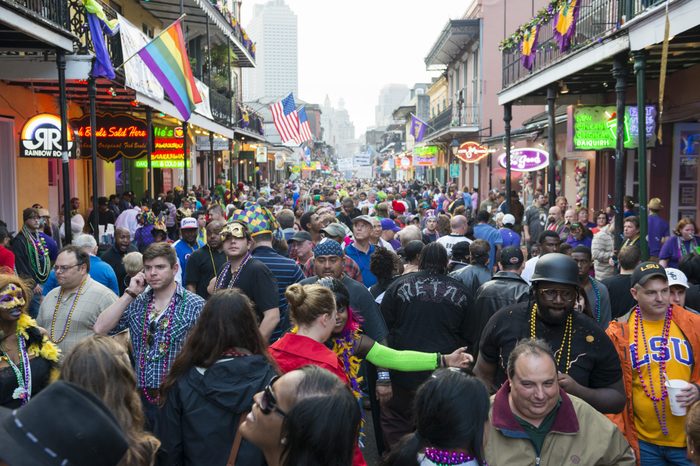Learn about the history of some of the most popular Mardi Gras traditions so you can celebrate in New Orleans the right way!
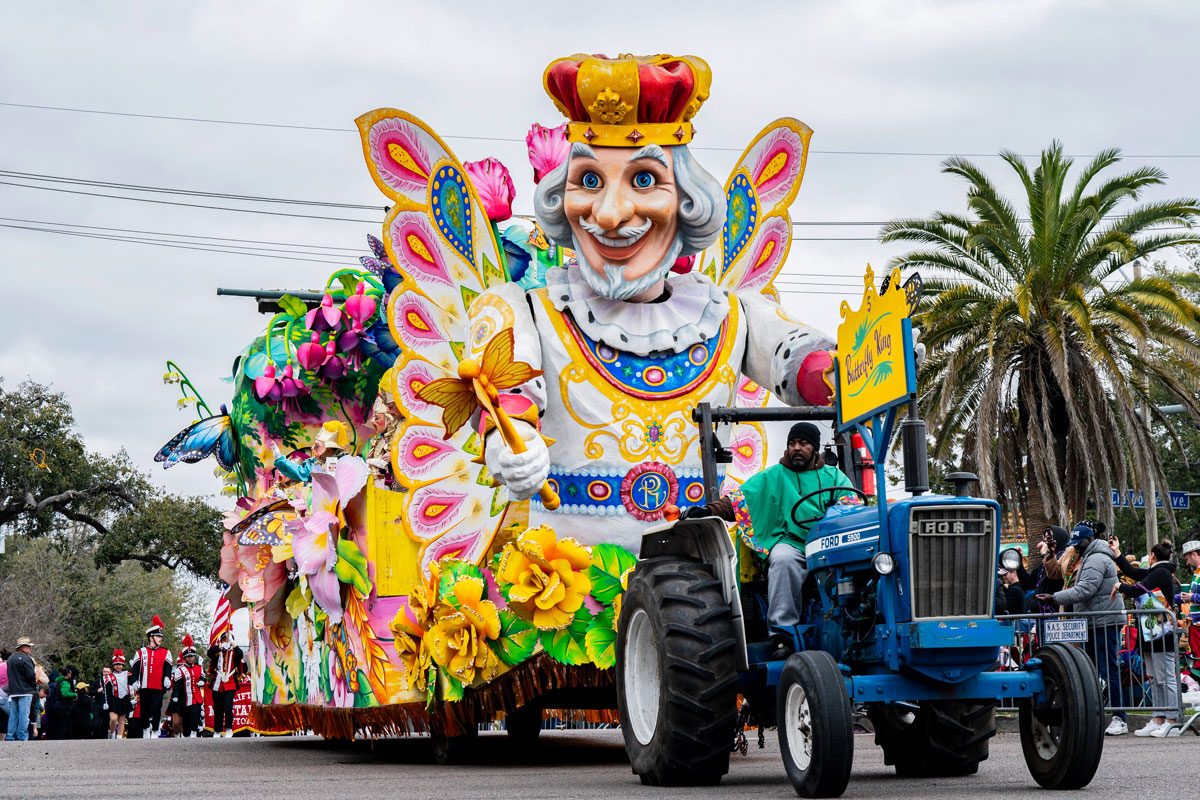
12 Popular Mardi Gras Traditions and Their Origins

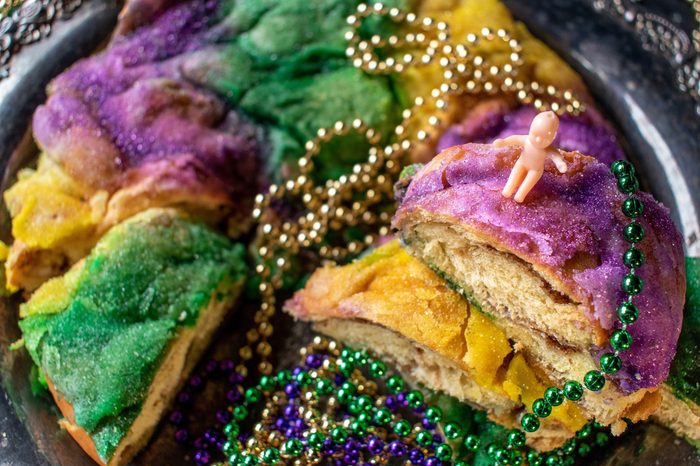
King cake
If you’ve never had a chance to try a king cake, you’re missing out. While some say the delicious circular pastry dates back to 1870s France, others think it originated in the Middle Ages. Either way, it is typically associated with Christianity—specifically, the feast of the Epiphany. This occurs each year on January 6th (also known as the twelfth day of Christmas), and it and represents the day that the three magi (or kings) visited the baby Jesus. The popular cake has since expanded its reach to the Mardi Gras celebration in New Orleans, which is several weeks after the Epiphany. A small plastic baby or some other type of trinket is baked into each cake. Whoever ends up with the baby is responsible for the next king-cake party.
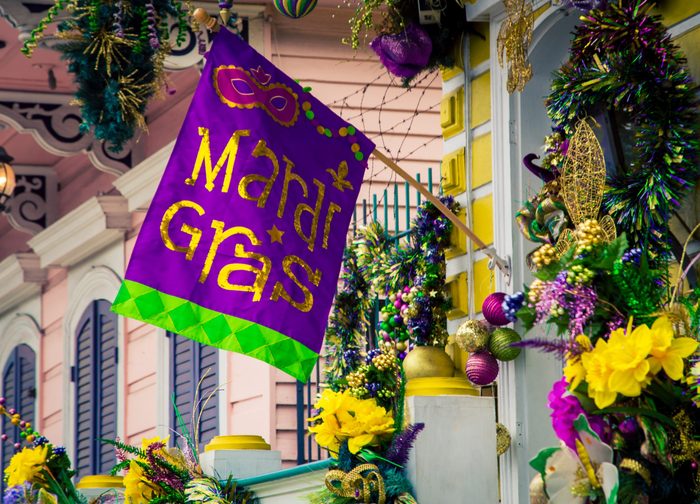
The color scheme
Most Mardi Gras decorations are gold, yellow and purple, but have you ever wondered why? Back in 1892, the theme for the Rex parade was “Symbolism of Colors,” at which point the three hues were designated as the official colors of the celebration. The Mardi Gras colors were chosen because gold represents power, green represents faith and purple represents justice. But why three colors instead of one or two? The Rex founder decided that Mardi Gras—like any other country or kingdom, including the United States, France and the United Kingdom—needed three colors in its flag.
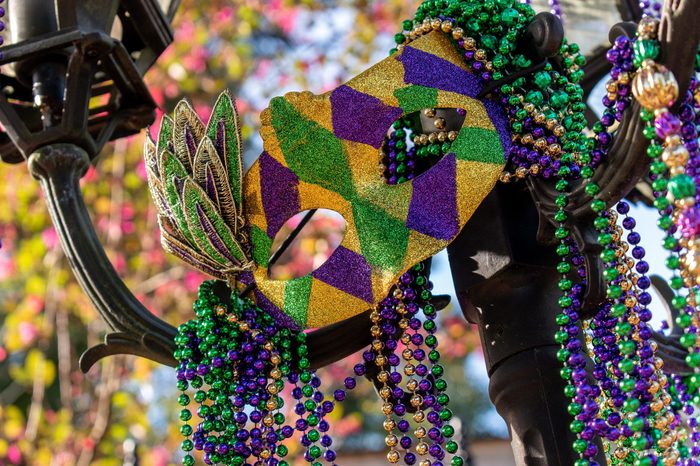
Masks
Along with beads, masks are an integral part of any Mardi Gras celebration. Though masks have been used all over the world for centuries, this Mardi Gras tradition started in the early days of Mardi Gras in New Orleans as a way for people to get around socioeconomic constraints and designations. For these few days each year, people were able to transform into other personas as they moved about the city. Unfortunately, this didn’t always work for women, who could have their reputations questioned if they wore masks.
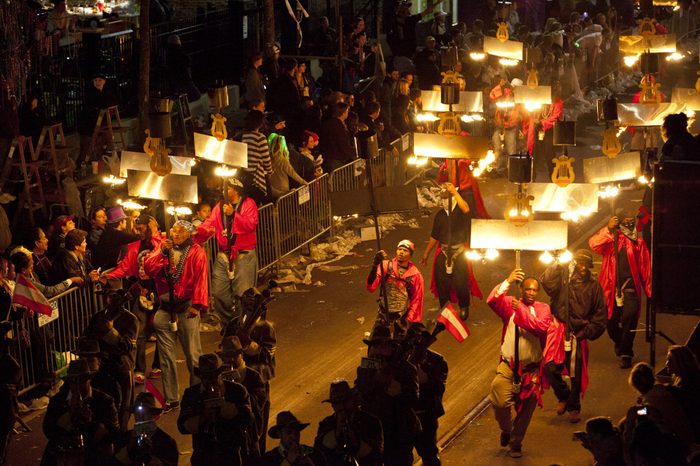
Flambeaux
Flambeaux—or flaming torches—are another part of Mardi Gras traditions. The first flambeaux were used at the celebration of 1857 and began as a way to allow attendees to see what was going on during the parades held at night. Originally, the flambeaux were carried by men of color, both enslaved individuals and free men who were primarily Creoles. The men would perform elaborate dances while carrying the torches, and onlookers would throw coins in the street as tips for the dancers. Though flambeaux are no longer a necessity thanks to modern infrastructure, they remain an important part of the Mardi Gras celebration.
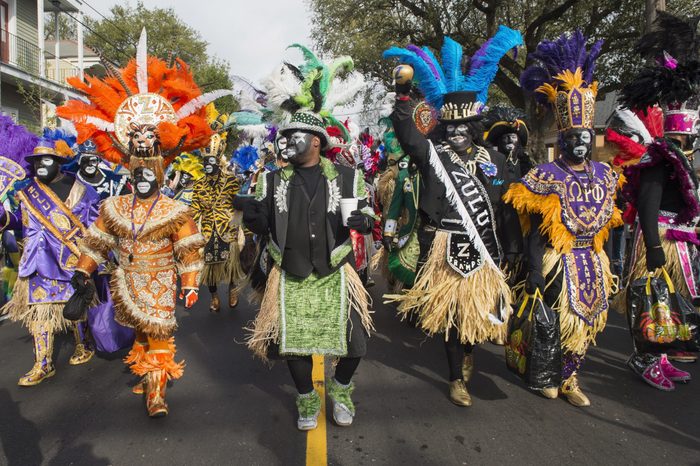
Krewes
If you’ve heard about “krewes” associated with Mardi Gras but aren’t sure what they are, you’ve come to the right place. In short, krewes are different clubs in New Orleans that organize and put on the Mardi Gras celebrations in the city. They date back to 1857 when the Mystick Krewe of Comus put on the first Mardi Gras parade and coined the term. In fact, it was the krewes that originated many of the traditions we’re discussing here, like flambeaux and masks. The five first krewes in New Orleans were Comus, Momus, Twelfth Night, Rex and Proteus, and membership was initially limited to rich white people. As a result, many new krewes popped up during the beginning of the 20th century to accommodate groups that had been left out, including women, African Americans, Irish, Italians and Germans. Today, there are more than 70 krewes.
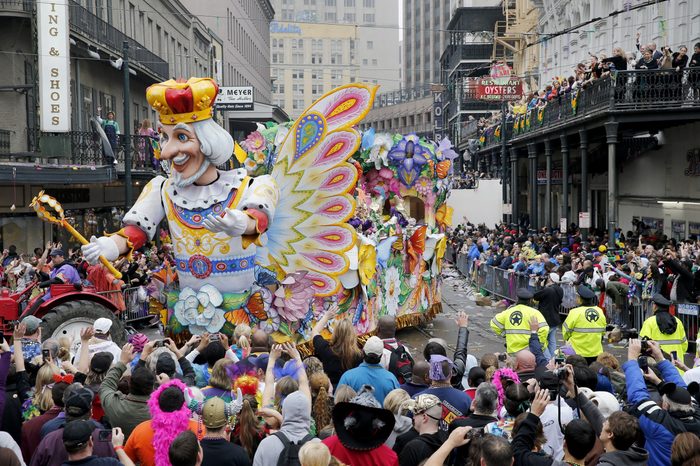
Parades
Mardi Gras has been celebrated in what is now the United States since 1699 when French explorers Pierre Le Moyne d’Iberville and Sieur de Bienville landed near present-day New Orleans. They celebrated their arrival and named the spot where they landed “Point du Mardi Gras.” This turned into an annual party, featuring balls and street parties until the Spanish took control of the region and outlawed these celebrations. The Mardi Gras festivities that we know today started up again in 1812 when Louisiana became a state, and they evolved in 1827 when a group of students danced in the streets wearing colorful costumes. A decade later, the first official recorded Mardi Gras parade was held in New Orleans.
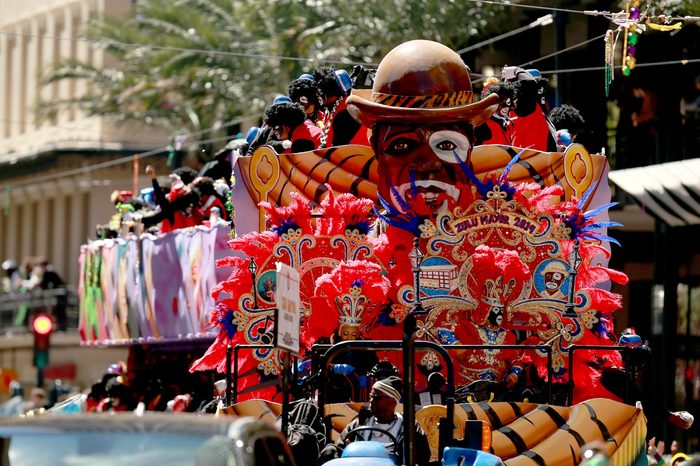
Floats
A memorable parade typically involves floats, and the ones used in the Mardi Gras celebrations certainly fit the bill. Ranging from being satirical and political to ornate and beautifully decorated, the Mardi Gras floats add a new dimension to the parade every year—making them one of the most popular Mardi Gras traditions yet! Many of the city’s krewes select a theme for each year’s festivities, and the floats are created according to that theme. But these aren’t public projects to begin with—most floats are made in secrecy in “secret dens,” with the big reveal happening each year at the parade. There are typically between 14 and 40 full-sized floats in a Mardi Gras parade. No matter much you plan, of course, things occasionally go awry.
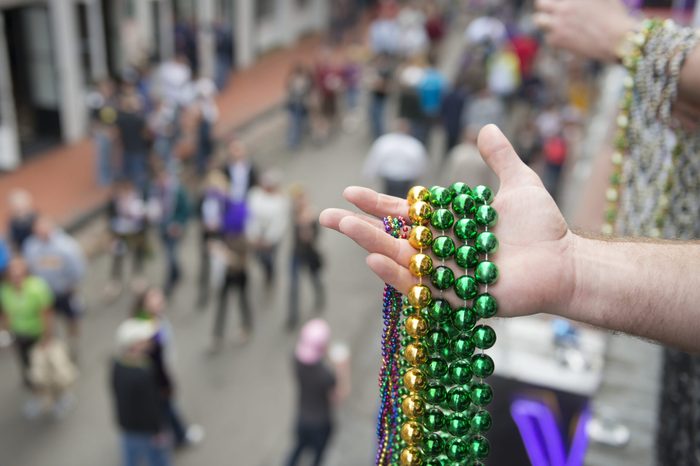
Flashing
One of the most common Mardi Gras traditions is the alleged tradition of women exposing their breasts in exchange for beads tossed from parade floats. But the thing is, this isn’t actually a Mardi Gras tradition in most of New Orleans. According to the Mardi Gras New Orleans website, “saying it is ‘tradition’ is like saying that people who get drunk and pass out on Bourbon Street are following tradition as well.” This tends to happen in the French Quarter, where many Mardi Gras attendees who are visiting from out of town tend to congregate. People who are interested in that type of celebration gravitate toward that area every year, and the so-called “tradition” continues. Also, you won’t find people flashing for beads at the parades and celebrations in other parts of the city.
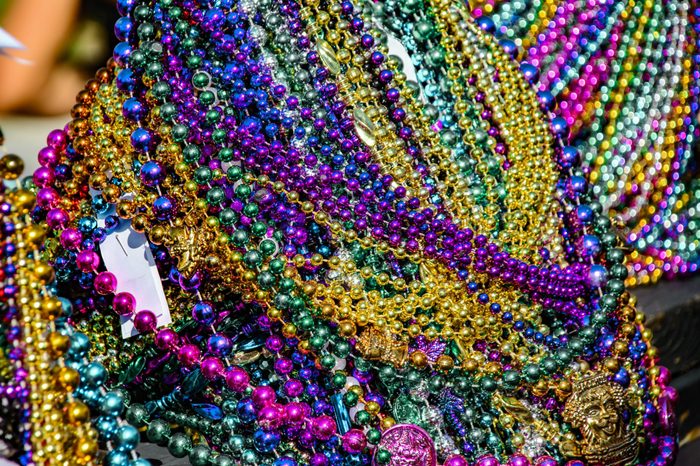
Beads
Many of the krewes come to the parade prepared with some sort of small objects to cast off from their floats, known as “throws.” Beads are, of course, the most popular and well-known of the throws. Parade onlookers can shout, “Throw me something, mister!” at the krewes if they’re interested in receiving beads or whatever else they have that day. The Mardi Gras tradition of throwing beads is thought to have started in the 1890s when one of the carnival kings threw strings of beads and fake jewels to his “loyal subjects” on the route. By the 1920s, this became common practice, though the beads were made of glass at the time; they didn’t become the plastic version we know today until the 1960s. As much as people enjoy this tradition, it’s not great for the city’s infrastructure: A few years ago, approximately 93,000 pounds of beads were found clogging New Orleans’ storm drains.
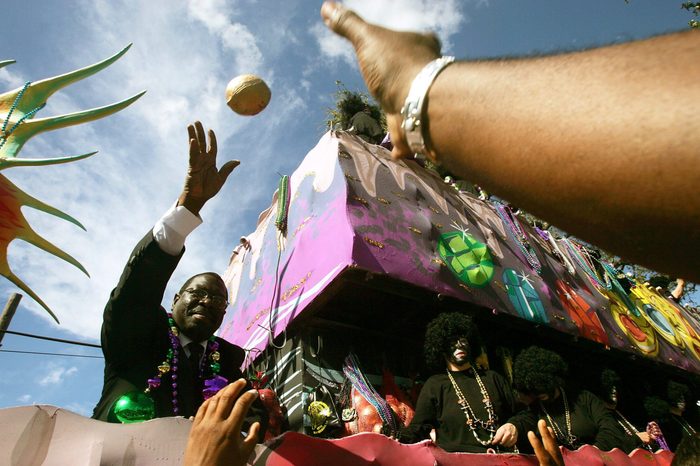
Coconuts
Not all krewes throw beads. The Zulus—one of New Orleans’ oldest African American krewes, which held its first parade in 1909—are known for throwing coconuts instead. Well, technically, the coconuts are no longer thrown as much as they are gently handed to festival-goers, for safety purposes. And these aren’t your average coconuts from the supermarket (though the tradition did start that way); the ones handed out today are painted and covered with glitter.
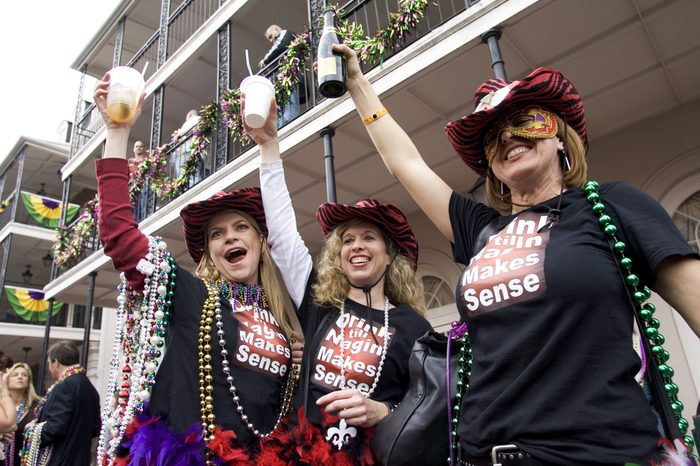
Heavy drinking
Along with flashing for beads, heavy drinking is another popular Mardi Gras tradition, particularly in the highly trafficked French Quarter. But like baring it all for beads, this isn’t a traditional part of the Mardi Gras celebration, though it is something that’s widely televised, thanks to the crowds of revelers on Bourbon Street. Overindulging is due, in part, to the city’s lax laws on the public consumption of alcohol, which allow open containers on the street as long as they’re in plastic cups. Having said that, the term “cocktail” was thought to originate in New Orleans, and the city is famous for several, including sazeracs, hurricanes and daiquiris.
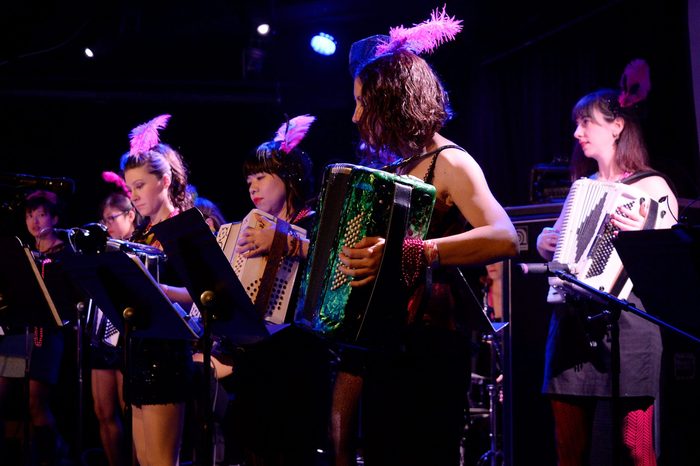
Balls
While the Mardi Gras parades are open to the public, most of the fancy balls thrown by the krewes are much more exclusive and require an invitation. There are typically more than 100 balls held throughout the Mardi Gras season each year, beginning on January 6th with the Twelfth Night Ball. Tableaux are another popular part of the balls. These staged pageants—which take place at approximately 20 balls each year—tell tales from mythology and history, and involve a final scene where a presentation is made to monarchs and a royal court.
Why trust us
At Reader’s Digest, we’re committed to producing high-quality content by writers with expertise and experience in their field in consultation with relevant, qualified experts. We rely on reputable primary sources, including government and professional organizations and academic institutions as well as our writers’ personal experiences where appropriate. We verify all facts and data, back them with credible sourcing and revisit them over time to ensure they remain accurate and up to date. Read more about our team, our contributors and our editorial policies.
Sources:
- CNN: “Mardi Gras Fast Facts”
- Thrillist: “What You Need to Know About New Orleans Drinking Laws for Mardi Gras”
- History: “6 Mardi Gras Traditions and Their Origins”
- NPR: “New Orleans Finds 93,000 Pounds Of Mardi Gras Beads In Storm Drains”
- Mardi Gras New Orleans: “Flashing for Mardi Gras Beads – A Carnival Tradition?”
- Mardi Gras New Orleans: “Mardi Gras Floats”
- The Advocate: “Arthur Hardy: 160 years ago today, a parade that tamed Mardi Gras (a little)”
- Time: “The History Behind 5 of New Orleans’ Favorite Mardi Gras Traditions”
- Scientific American: “Three Men and a Baby: A Brief History of King Cakes”
- Mardi Gras New Orleans: “What’s a Mardi Gras party without a King Cake?”





















